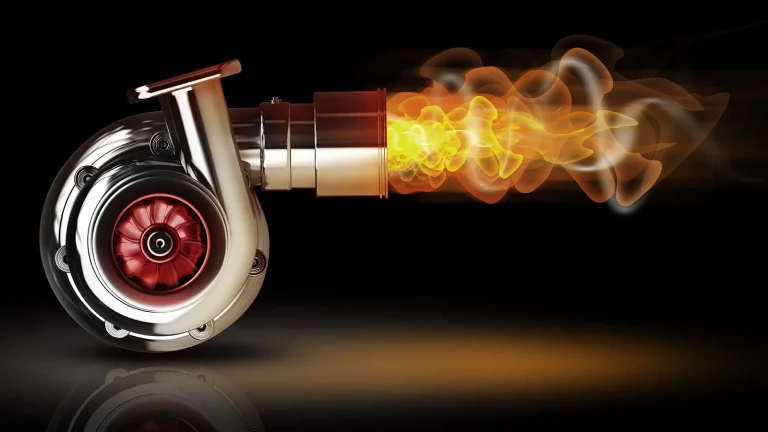What’s a Mustang GT’s Top Speed? [2024]
The top speed of a Mustang GT, according to Ford Motor Company, stands at an impressive 163 miles per hour (mph). This remarkable speed is made possible by the Mustang GT’s formidable 5.0 V8 engine, boasting 450 horsepower. With such power under the hood, the Mustang GT exhibits exceptional performance capabilities, allowing it to accelerate from zero to 60 mph in a mere 4.4 seconds. Whether on the open highway or the racetrack, the Mustang GT’s top speed showcases its prowess as a high-performance sports car in the Ford lineup.
In the realm of high-performance sports cars, the Ford Mustang GT stands as a formidable contender, celebrated not only for its iconic design but also for its impressive speed capabilities. One key metric that enthusiasts and drivers often inquire about is the Mustang GT’s top speed.
As a flagship model within Ford’s Mustang lineup, the GT variant boasts a powerful engine and sleek design, contributing to its remarkable performance on the road. In this article, we delve into the exhilarating realm of the Mustang GT, exploring the specifications and engineering that culminate in its impressive top speed of 163 miles per hour (mph).
Whether you’re a Mustang enthusiast or simply curious about the capabilities of this iconic sports car, let’s unravel the details that make the Mustang GT a true speedster on the asphalt.
First Generation Ford Mustang GT
The first generation Ford Mustang GT, introduced in 1965, marked the inception of a legendary lineage within the Mustang family. This high-performance variant added a new dimension to the already iconic Mustang, catering to drivers seeking a more spirited and dynamic driving experience.
Under the hood, the first-generation Mustang GT was equipped with a V8 engine, emphasizing power and speed. The GT package included features such as a louder dual exhaust, special side stripes, and the distinctive GT emblem, setting it apart from the standard Mustang models. The combination of sporty aesthetics and enhanced performance made the Mustang GT an instant classic among automotive enthusiasts.
With its sport-tuned suspension and an available “Pony Interior” option, featuring embossed mustangs on the seatbacks, the first-generation Mustang GT provided a blend of performance and comfort. The availability of both coupe and convertible body styles added to its versatility and appeal.
The first-generation Mustang GT established a legacy that would continue to evolve with each subsequent model, solidifying its status as an iconic American muscle car. Today, these early Mustang GTs are highly sought after by collectors and enthusiasts alike, representing a pivotal chapter in the history of this enduring and beloved automobile.
Second Generation Ford Mustang
The second generation of the Ford Mustang, produced from 1974 to 1978, represented a transitional period for the iconic pony car. This era was marked by changes influenced by shifting market demands, evolving safety and emissions standards, and the impact of the oil crisis.
One notable feature of the second-generation Mustang was its larger size compared to its predecessor. The design reflected a shift towards a more prominent and muscular appearance, with a longer hood and a distinctive fastback roofline. The Mustang II, as it was commonly known, was available in coupe and hatchback body styles.
Under the hood, the second-generation Mustang underwent significant changes due to stricter emission regulations and a focus on fuel efficiency. The available engine options included four-cylinder and V6 engines, emphasizing economy over raw power. While a V8 engine was initially absent from the lineup, a V8 option was reintroduced in later years, albeit with reduced displacement.
One notable variant within the second generation was the Mustang II Cobra, which featured sporty styling elements and a performance-oriented image. However, overall performance during this period was more modest compared to earlier Mustangs.
Despite the shift towards a smaller and more fuel-efficient design, the second-generation Mustang played a crucial role in maintaining the model’s presence during a challenging automotive landscape. Its adaptability to changing market conditions set the stage for the subsequent iterations of the Mustang, which would return to its performance-oriented roots in the years to come.

Third Generation Ford Mustang GT
The third generation of the Ford Mustang, produced from 1979 to 1993, brought forth a significant evolution in design and performance. Introduced against the backdrop of a changing automotive landscape, the Mustang underwent a transformation that included a move towards a more aerodynamic and modern aesthetic.
In terms of performance, the third-generation Mustang GT, which debuted in 1982, reclaimed a more assertive stance with a focus on speed and handling. The 5.0L V8 engine, often referred to as the “5.0,” became synonymous with the Mustang GT during this era. Initially producing around 157 horsepower, the engine underwent improvements over the years, and by the mid-1980s, it surpassed the 200-horsepower mark.
The exterior design of the third-generation Mustang GT featured a sloping nose, a distinctive grille, and a hatchback or convertible body style. This generation also witnessed the introduction of features like the four-eye headlight design and a hood with functional air vents.
Performance enthusiasts appreciated the handling capabilities of the Mustang GT, especially with options like the “TRX” handling suspension and the iconic Fox-body platform. The GT’s performance credentials were further solidified with advancements in fuel injection technology.
The third-generation Mustang GT played a crucial role in rejuvenating the model’s performance image, laying the foundation for the high-performance iterations that would follow in later generations. The “5.0” V8 engine became a legend in its own right, and the aerodynamic design marked a departure from the boxy aesthetics of the previous generation. This era set the stage for the Mustang to reclaim its status as a powerful and agile American muscle car.

Fourth Generation Ford Mustang GT
The fourth generation of the Ford Mustang, spanning from 1994 to 2004, ushered in a modern era for the iconic pony car. The fourth-generation Mustang GT, introduced in 1996, continued the legacy of performance and style while embracing a more contemporary design.
One of the defining features of the fourth-generation Mustang GT was its return to a more muscular and aggressive appearance. The exterior design featured a distinctive front grille, pronounced side scoops, and a raised hood, giving the Mustang GT a bold and dynamic presence on the road.
Under the hood, the fourth-generation Mustang GT was powered by a 4.6L SOHC Modular V8 engine. This engine, while smaller in displacement compared to its predecessor, delivered improved efficiency and performance, producing around 305 horsepower in later model years. The Mustang GT was available with both manual and automatic transmissions, providing drivers with flexibility in their driving experience.
The chassis of the fourth-generation Mustang GT underwent enhancements, contributing to improved handling and ride quality. The introduction of features like a MacPherson strut front suspension and a solid rear axle further enhanced the car’s performance characteristics.
In 1999, the Mustang GT received a facelift, featuring updated styling elements such as new headlights and a revised hood. Interior improvements included upgraded materials and additional features for driver comfort and convenience.
Overall, the fourth-generation Mustang GT successfully blended modern design elements with a commitment to performance, solidifying its place as a popular choice among enthusiasts. This era set the stage for the continued evolution of the Mustang as it embraced the 21st century.

Fifth Generation Ford Mustang GT
The fifth generation of the Ford Mustang, produced from 2005 to 2014, brought about a modern reinterpretation of the classic pony car. The fifth-generation Mustang GT, which debuted in 2005, combined contemporary design elements with potent performance features, paying homage to its heritage while embracing cutting-edge technology.
One of the most notable aspects of the fifth-generation Mustang GT was its return to a more retro-inspired design, drawing inspiration from the classic Mustangs of the 1960s. The muscular and sculpted exterior featured classic design cues such as the iconic grille, triple taillights, and a fastback roofline, capturing the essence of the original Mustang.
Under the hood, the fifth-generation Mustang GT was powered by a 4.6L 3-valve SOHC V8 engine, delivering around 300 horsepower in the earlier models and later increasing to 315 horsepower. This engine was mated to a five-speed manual or automatic transmission, providing drivers with a dynamic driving experience.
Performance was a key focus during this era, with features such as a solid rear axle and optional performance packages that included upgrades to the suspension, brakes, and exhaust. The introduction of the Shelby GT500 in 2007 with a supercharged V8 engine further emphasized Ford’s commitment to high-performance variants within the Mustang lineup.
The interior of the fifth-generation Mustang GT featured modern amenities and improved materials, enhancing the overall comfort and driving experience. Technological advancements, including available infotainment systems and connectivity options, brought the Mustang into the digital age.
The fifth-generation Mustang GT successfully merged nostalgic design elements with contemporary engineering, appealing to both longtime enthusiasts and a new generation of drivers. Its performance capabilities and iconic styling contributed to the enduring popularity of the Mustang as a symbol of American muscle.
Sixth Generation Ford Mustang GT
The sixth generation of the Ford Mustang, launched in 2015 and continuing into the present, represents a further evolution of this iconic American muscle car. The sixth-generation Mustang GT continues to uphold the model’s legacy while introducing modern design elements, advanced technology, and enhanced performance features.
Visually, the sixth-generation Mustang GT maintains a muscular and athletic stance, with a sleeker and more aerodynamic design compared to its predecessors. Signature design elements, such as the distinctive grille and tri-bar taillights, pay homage to the Mustang’s heritage while incorporating contemporary styling cues.
Under the hood, the Mustang GT of the sixth generation boasts formidable power. The 5.0L Coyote V8 engine powers the GT, delivering impressive performance with around 450 horsepower and 410 lb-ft of torque. This powerhouse engine is available with either a six-speed manual or a 10-speed automatic transmission, providing drivers with versatile and engaging driving options.
In terms of handling and performance, the sixth-generation Mustang GT features an independent rear suspension, contributing to improved ride quality and handling dynamics. Performance packages, such as the GT Performance Package, offer additional enhancements to the car’s brakes, suspension, and overall driving experience.
The interior of the sixth-generation Mustang GT reflects a blend of modern comfort and cutting-edge technology. Premium materials, available leather upholstery, and advanced infotainment systems contribute to a more refined driving environment. Features like selectable drive modes and launch control further highlight the car’s performance-oriented nature.
With the sixth generation, Ford has continued to innovate and refine the Mustang GT, ensuring that it remains a symbol of American muscle with contemporary appeal. The combination of powerful performance, striking design, and modern features cements the Mustang GT’s position as an icon in the world of high-performance sports cars.

Ford Mustang Mach-E GT
The Ford Mustang Mach-E GT represents an electrifying addition to the Mustang lineup, departing from the traditional combustion engine to embrace electric power. Introduced as an all-electric performance SUV, the Mach-E GT combines the iconic Mustang heritage with the eco-friendly efficiency of electric propulsion.
Key Features:
Electric Performance
The Mach-E GT is powered by a dual-motor all-wheel-drive system, delivering exhilarating performance. The electric powertrain generates instant torque, propelling the vehicle from 0 to 60 mph in just a few seconds.
Extended Range
Equipped with an extended-range battery, the Mach-E GT offers a practical and versatile driving range on a single charge. The all-electric nature of the vehicle contributes to reduced emissions and a more sustainable driving experience.
Mustang-Inspired Design
The Mach-E GT draws design inspiration from the classic Mustang, featuring a sleek and sporty exterior. Signature Mustang elements, such as the distinctive headlights and rear haunches, are reimagined for this electric SUV.
Performance Handling
With a focus on performance, the Mach-E GT features sport-tuned suspension and responsive handling. The low center of gravity, thanks to the strategically placed battery, enhances stability and cornering capabilities.
Luxurious Interior
Inside the Mach-E GT, drivers and passengers are treated to a modern and comfortable interior. Premium materials, advanced technology, and configurable ambient lighting contribute to a refined driving experience.
Advanced Technology
The Mach-E GT is equipped with Ford’s latest technology features, including the SYNC infotainment system, a large touchscreen display, and an array of driver-assistance features for safety and convenience.
Unmistakable Identity
While breaking new ground with electric power, the Mach-E GT retains the unmistakable identity of a Mustang. The combination of performance, design, and innovative technology ensures that it stands out in the growing electric SUV segment.
What is the Mustang GT speed limited to?
The speed limit of a Ford Mustang GT is typically governed by the vehicle’s electronic speed limiter. In most cases, the top speed is electronically restricted to around 155 miles per hour (mph).
This speed limitation is a common safety feature implemented by manufacturers to ensure the vehicle’s performance aligns with legal and safety standards. It’s important to note that attempting to exceed the speed limiter is neither advisable nor legal on public roads.
High-performance vehicles like the Mustang GT are engineered to provide exhilarating acceleration and handling within designated speed limits, emphasizing both driver enjoyment and safety.
What is the top speed of the Ford GT?
The top speed of the Ford GT, the high-performance sports car, is approximately 216 mph (348 km/h). The Ford GT is renowned for its aerodynamic design, advanced engineering, and powerful performance.
Its top speed places it among the fastest production cars in the world. The vehicle’s 3.5-liter twin-turbocharged EcoBoost V6 engine, coupled with its lightweight construction and aerodynamic efficiency, contributes to its remarkable speed capabilities.
It’s important to note that top speeds can vary slightly depending on specific model years and configurations.
How fast is new Mustang GT?
The specific top speed of the new Ford Mustang GT can vary depending on the model year and any optional performance packages chosen. However, as a general reference, the top speed for the Ford Mustang GT is often electronically limited to around 155 mph (250 km/h). This is a common practice among manufacturers to ensure safety and compliance with speed regulations.
For the most accurate and up-to-date information on the top speed of a specific model year, it’s recommended to refer to the official specifications provided by Ford or consult the owner’s manual for the particular Mustang GT variant. Car specifications, including performance metrics, can vary between model years and are subject to updates and changes.
How fast is the Mustang GT 500?
The Ford Mustang Shelby GT500 is a high-performance variant known for its impressive speed capabilities. The top speed of the Mustang Shelby GT500 is approximately 180 mph (290 km/h). This speed is achieved with the help of a powerful engine and performance enhancements specific to the GT500 model.
The 2020 Shelby GT500, for example, is equipped with a supercharged 5.2-liter V8 engine that produces over 700 horsepower. It’s important to note that specific performance figures can vary slightly depending on model years and any optional packages chosen.
For the most accurate and up-to-date information on the top speed of a particular Mustang Shelby GT500 model, it is recommended to refer to the official specifications provided by Ford or consult the owner’s manual for the specific variant. Car specifications, including top speed, can be subject to updates and changes between model years.
FAQ:
Q: What is the top speed of the Ford Mustang GT?
A: The top speed of the Ford Mustang GT is typically around 155 mph. This is often electronically limited for safety and compliance with speed regulations.
Q: Can the Mustang GT’s top speed be increased?
A: Attempting to increase the Mustang GT’s top speed beyond its electronic limit is not recommended, as it can compromise safety and may be illegal.
Q: Does the top speed vary between Mustang GT model years?
A: Yes, there can be slight variations in top speed between different model years, depending on engineering updates and specifications.
Q: What engine powers the Mustang GT and contributes to its speed?
A: The Mustang GT is often equipped with a powerful V8 engine that contributes to its impressive performance and speed.
Q: How does the Mustang GT’s top speed compare to other sports cars?
A: The Mustang GT’s top speed is competitive among sports cars in its class, providing an exhilarating driving experience.
Q: Is the Mustang GT suitable for track racing?
A: Yes, the Mustang GT is designed for high-performance driving and is often used on tracks. Some enthusiasts may opt for performance packages to enhance track capabilities.
Q: Does the top speed vary with different transmissions?
A: The choice of transmission, whether manual or automatic, may impact acceleration but typically does not significantly affect the electronically limited top speed.
Q: Are there optional performance packages available for the Mustang GT?
A: Yes, Ford offers optional performance packages that can include enhancements to the engine, suspension, and overall driving dynamics.
Q: What safety features are in place to ensure responsible speed usage?
A: The Mustang GT is equipped with various safety features, and its top speed is electronically limited to promote responsible driving.
Q: Where can I find the official top speed specifications for my specific Mustang GT model?
A: For the most accurate and up-to-date information, refer to the official specifications provided by Ford or consult the owner’s manual for your specific Mustang GT variant.


![Find out the Cost to Lower a Car [Get the Best Deals!]](https://automhelp.com/wp-content/uploads/2024/03/Find-out-the-Cost-to-Lower-a-Car.webp)


![What Is Overdrive on A Car? [Quick Guide 2024]](https://automhelp.com/wp-content/uploads/2024/03/What-Is-Overdrive-on-A-Car.webp)

